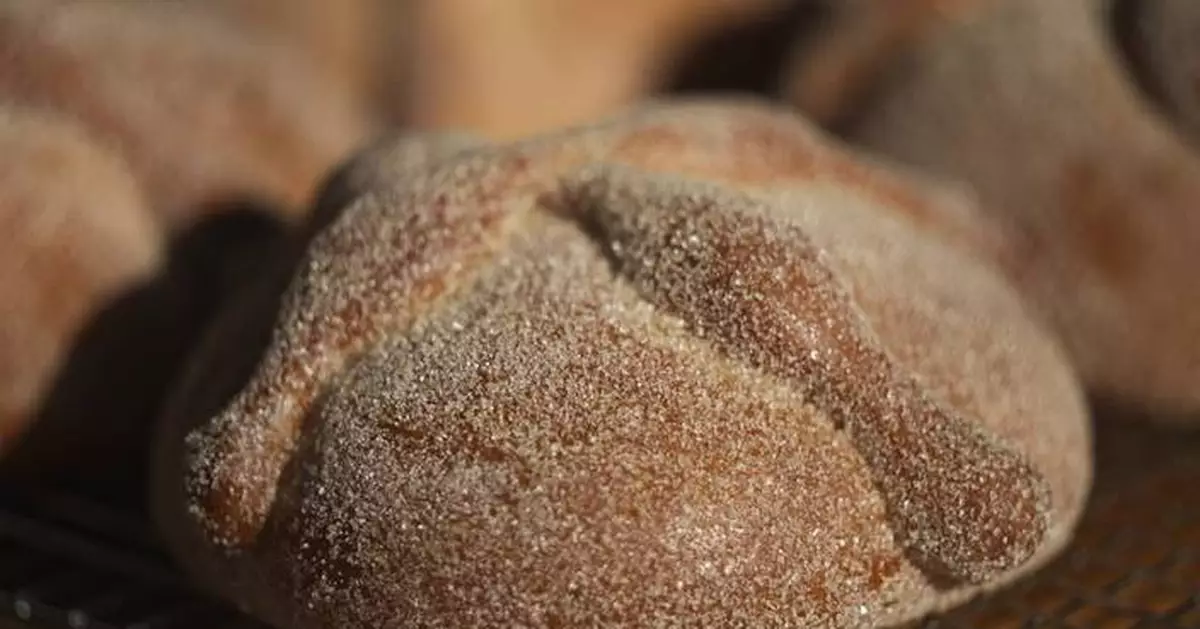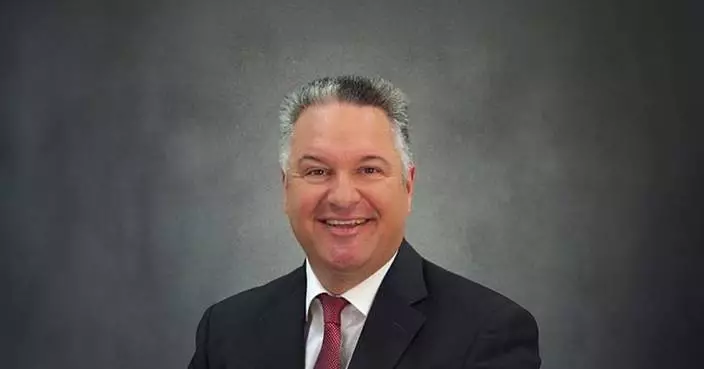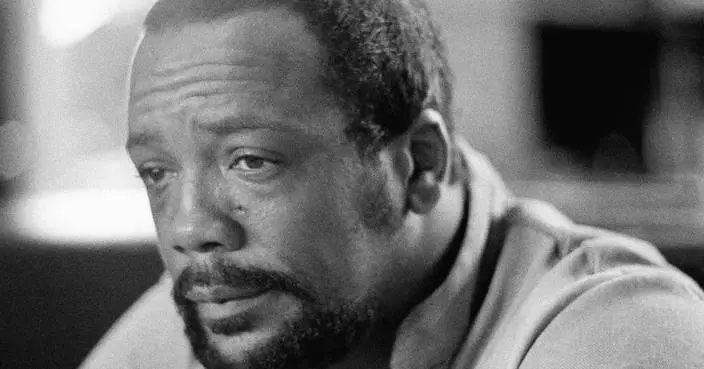MEXICO CITY (AP) — The first bite is an assault to the senses. A sugary, citric, fluffy delight.
“Pan de muerto” or “bread of the dead” is baked in Mexico every year, from early October to mid-November, amid Day of the Dead celebrations.
Click to Gallery
Pan de muerto, or "bread of the dead," traditional for Mexico's Day of the Dead, sits for sale at a bakery in the San Rafael neighborhood of Mexico City, Thursday, Oct. 17, 2024. (AP Photo/Fernando Llano)
Victor Silverio prepares pan de muerto, or "bread of the dead," traditional for Mexico's Day of the Dead, at a bakery in the San Rafael neighborhood of Mexico City, Thursday, Oct. 17, 2024. (AP Photo/Fernando Llano)
Victor Silverio prepares pan de muerto, or "bread of the dead," traditional for Mexico's Day of the Dead, at a bakery in the San Rafael neighborhood of Mexico City, Thursday, Oct. 17, 2024. (AP Photo/Fernando Llano)
Victor Silverio prepares pan de muerto, or "bread of the dead," traditional for Mexico's Day of the Dead, at a bakery in the San Rafael neighborhood of Mexico City, Thursday, Oct. 17, 2024. (AP Photo/Fernando Llano)
Rafael Hernandez mixes tangerine peels with butter to make pan de muerto, or "bread of the dead," traditional for Mexico's Day of the Dead, at a bakery in the San Rafael neighborhood of Mexico City, Thursday, Oct. 17, 2024. (AP Photo/Fernando Llano)
Manu Tovar opens the doors of his bakery to sell pan de muerto, or "bread of the dead," traditional for Mexico's Day of the Dead, in the San Rafael neighborhood of Mexico City, Thursday, Oct. 17, 2024. (AP Photo/Fernando Llano)
Pan de muerto, or "bread of the dead," traditional for Mexico's Day of the Dead, sits for sale at a bakery in San Rafael neighborhood of Mexico City, Thursday, Oct. 17, 2024. (AP Photo/Fernando Llano)
Shaped like a bun, decorated with bone-like bread pieces and sugar on top, pan de muerto can be seen at coffee shops, dinner tables or home-made altars, which Mexicans build to remember their deceased loved ones and welcome them back for a night on Nov. 2.
Its date of origin can’t be specified, but pan de muerto can be thought of as a fusion of Mesoamerican and Spanish traditions, said Andrés Medina, a researcher at the Anthropological Research Institute of the National Autonomous University of Mexico.
Since pre-Hispanic times, festivities for the dead have existed and skull-shaped products have been made. But in the 1500s, when the Spaniards arrived, new elements such as sugar and bread were incorporated into Indigenous offerings.
Those early celebrations, Medina said, coincided with the crop season, which provides pan de muerto a spiritual, symbolic meaning. If its decorations resemble bones, it’s because Mesoamerican worldviews regarded them as the origin of life.
According to an ancient myth, Quetzalcóatl created humankind out of bones. Details vary from one source to another, but soon after the god apparently stole them from the underworld, he fell. And from his blood, the seed of life was born.
“Under this worldview, the human body’s bones, just like the fruit’s insides, are seeds,” Medina said. “So, in a way, altars are offerings to fertility. And Day of the Dead is a celebration of the life contained in each seed.”
Pan de muerto’s shape, ingredients and preparations differ from one Mexican state to another, but is enjoyed all over the country.
In Mexico City, hundreds of bakeries make their own version. Rodrigo Delgado has spent years trying to taste them all.
For fun, he challenges himself to try as many as possible and review them on his Instagram account. On his first quest, a decade ago, he tried 15. In 2023, he had a bite of 100. This year, he expects to taste at least 110.
“I like pan de muerto because of what it means during Day of the Dead season,” said Delgado, who also reviews local restaurants on his blog, Godínez Gourmet. “The mix of flavors of the bread, as much as its texture, are very comforting.”
He can’t remember the first time he tried pan de muerto, but he treasures the memories of his mother baking it at home. He and his brother used to knead the dough, he said, and shape the bone-like decorations of its top.
Baking pan de muerto is not an easy task. At Panadería Dos Veinte, in Mexico City's San Rafael neighborhood, owner Manu Tovar said that having these sweet buns ready for sale takes three days of work: one to extract the infusions that will provide the bread with its flavor, another to incorporate them into the dough and one more day to knead and shape the buns.
There’s no secret in his recipe, Tovar said. The ingredients — although seasonal — are simple: orange blossom, tangerine zest, anise and butter.
His special touch, what makes his bread unique, is the sourdough. “It’s an ancestral process,” Tovar said. “A millenary way to make bread.”
The sourdough that he and four assistants use is 20 years old. He incorporates water and flour daily, to keep it alive, and mixes part of it with new dough. This gives the bread a better taste, he said, and makes it easier to digest.
For years, said Tovar, he resisted the temptation of baking pan de muerto in early October. The quality of the ingredients improves as November gets closer, but customers kept asking when the buns would be ready, so he caved.
This season, aside from baking 90 pan de muertos per day, he came up with two new creations: a croissant roll filled with marigold cream and a bun — locally known as “concha” — shaped like a marigold flower and prepared with tangerine instead of vanilla or chocolate.
“If you bake it in a traditional way, you can only have pan de muerto now, because that’s when the fruit is available," Tovar said. "That’s what I think makes it so special.”
The ambience of the Day of the Dead season, he added, also plays a role. Nightfall comes earlier during this time of year and there’s certain mysticism, a particular feeling in the air.
“It probably has to do with the melancholy of what this festivity means,” he said. “For one day a year, you can feel closer to those who are no longer with you.”
Associated Press religion coverage receives support through the AP’s collaboration with The Conversation US, with funding from Lilly Endowment Inc. The AP is solely responsible for this content.
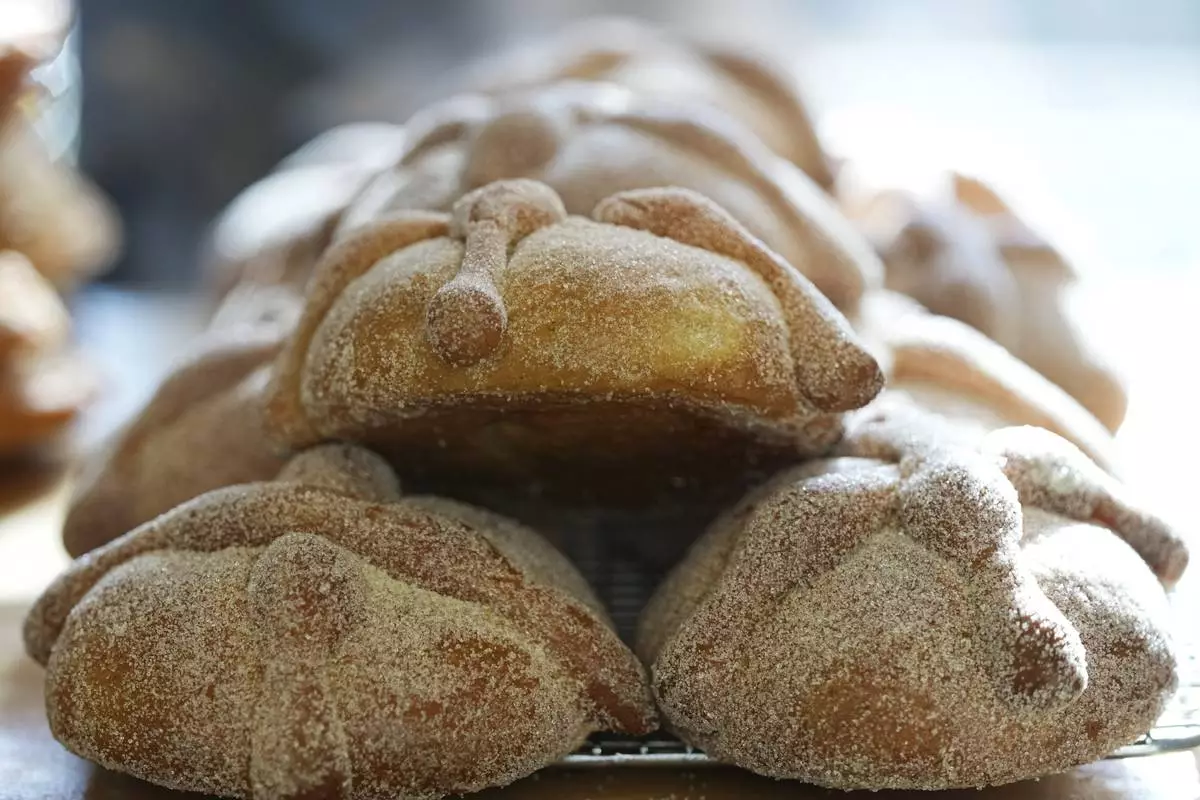
Pan de muerto, or "bread of the dead," traditional for Mexico's Day of the Dead, sits for sale at a bakery in the San Rafael neighborhood of Mexico City, Thursday, Oct. 17, 2024. (AP Photo/Fernando Llano)
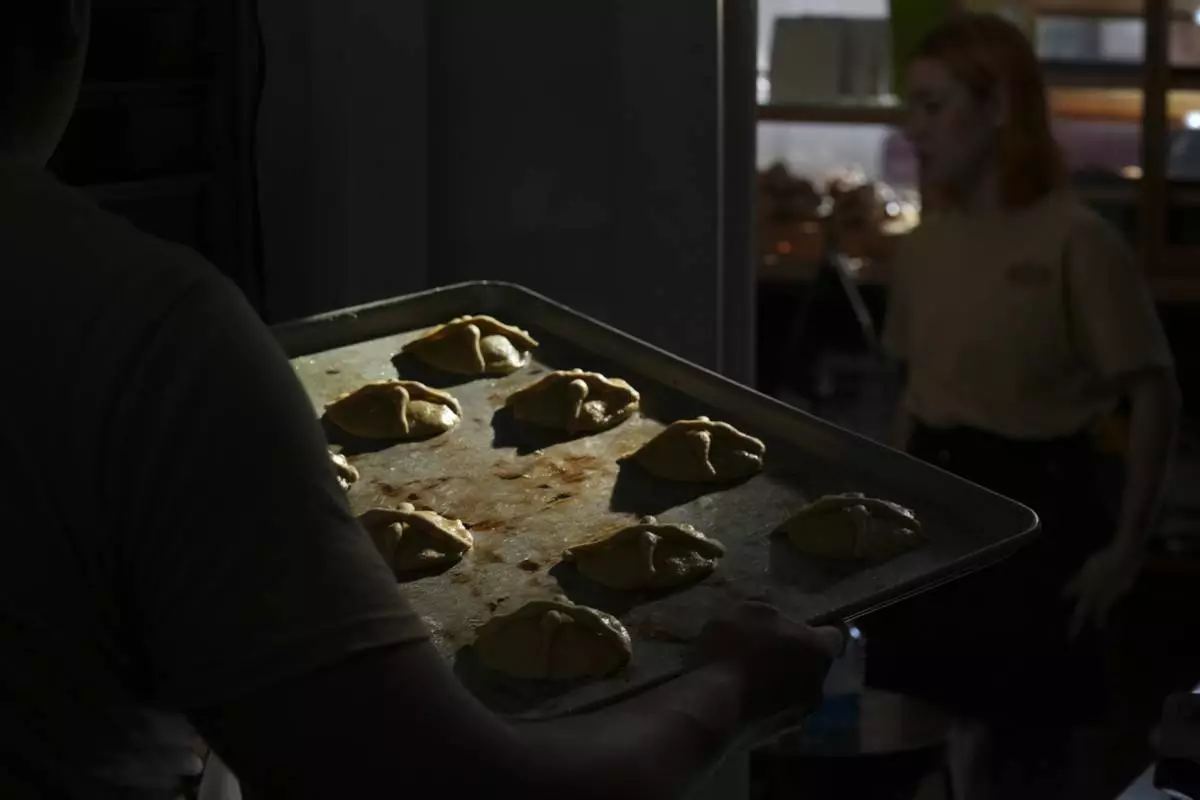
Victor Silverio prepares pan de muerto, or "bread of the dead," traditional for Mexico's Day of the Dead, at a bakery in the San Rafael neighborhood of Mexico City, Thursday, Oct. 17, 2024. (AP Photo/Fernando Llano)
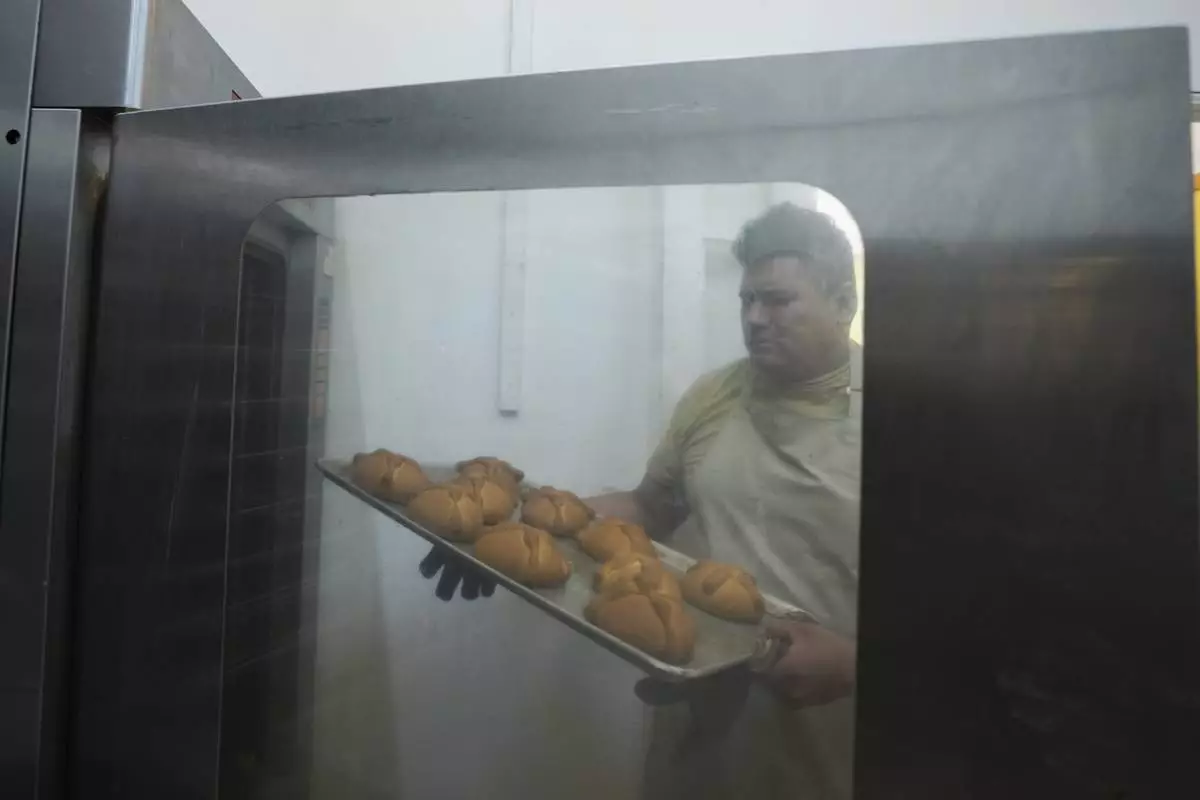
Victor Silverio prepares pan de muerto, or "bread of the dead," traditional for Mexico's Day of the Dead, at a bakery in the San Rafael neighborhood of Mexico City, Thursday, Oct. 17, 2024. (AP Photo/Fernando Llano)
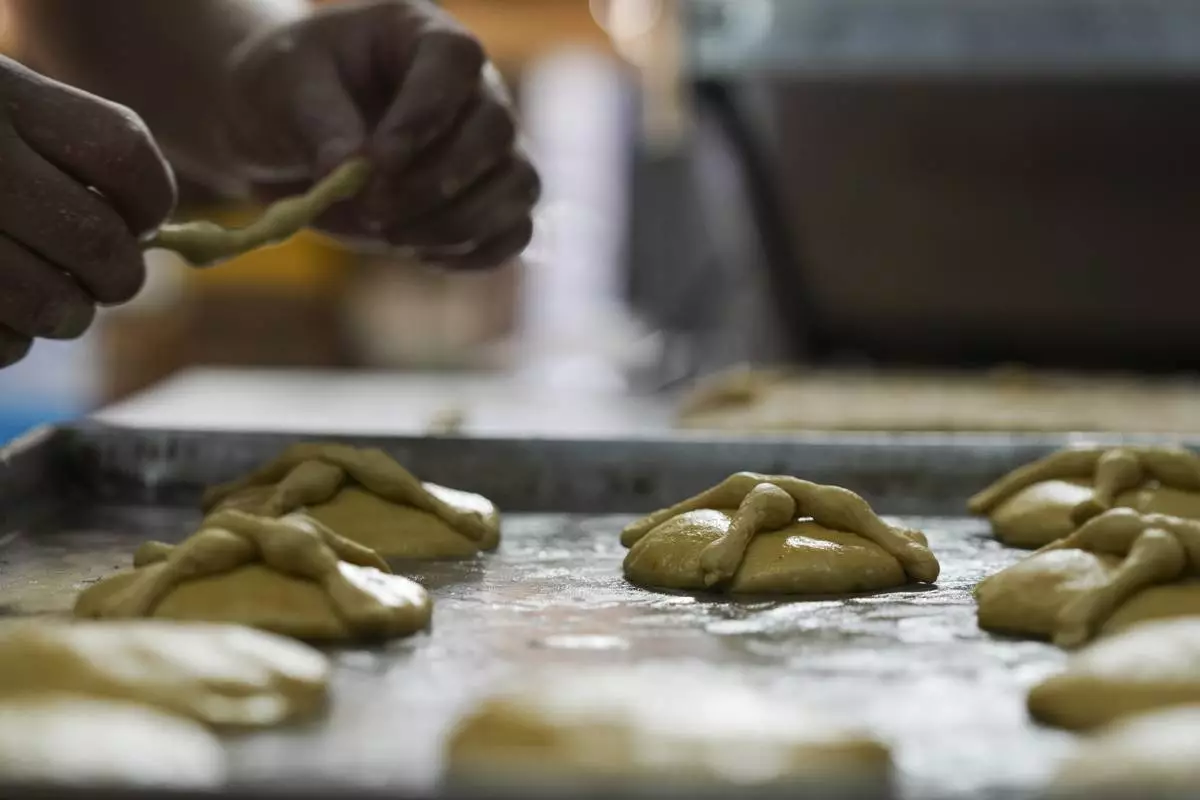
Victor Silverio prepares pan de muerto, or "bread of the dead," traditional for Mexico's Day of the Dead, at a bakery in the San Rafael neighborhood of Mexico City, Thursday, Oct. 17, 2024. (AP Photo/Fernando Llano)
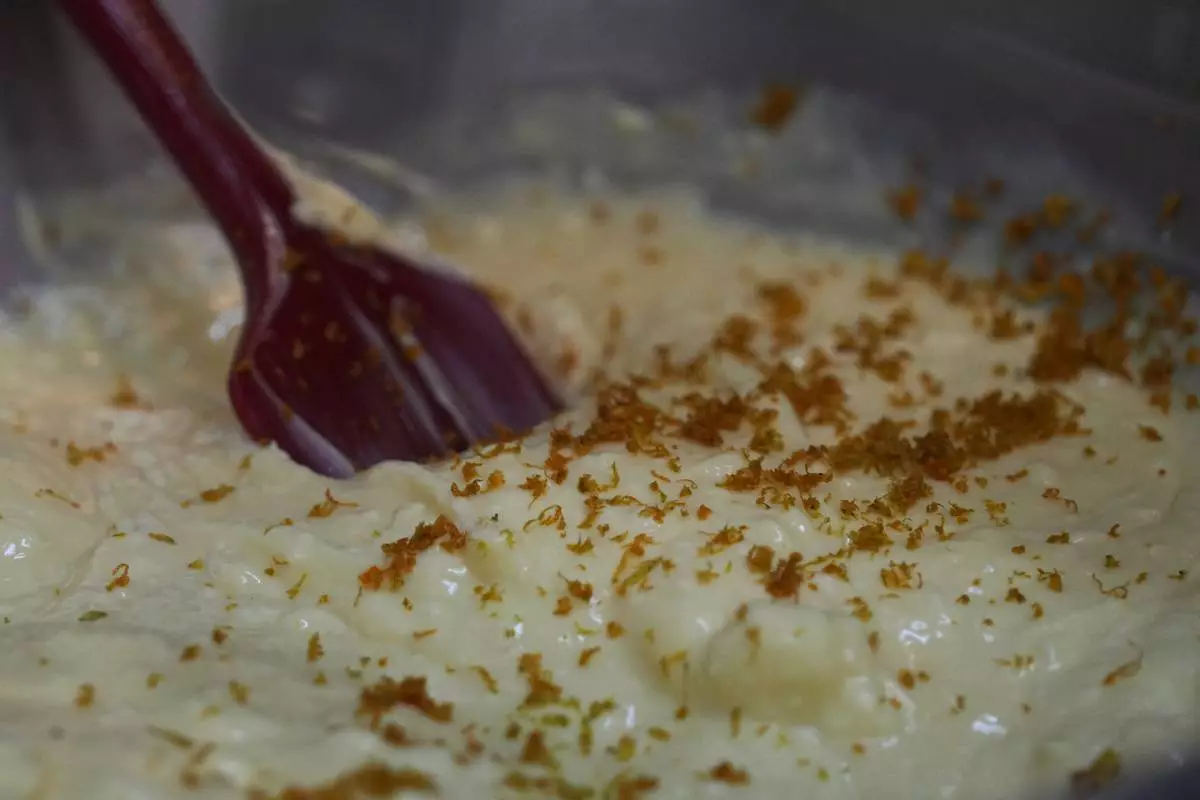
Rafael Hernandez mixes tangerine peels with butter to make pan de muerto, or "bread of the dead," traditional for Mexico's Day of the Dead, at a bakery in the San Rafael neighborhood of Mexico City, Thursday, Oct. 17, 2024. (AP Photo/Fernando Llano)
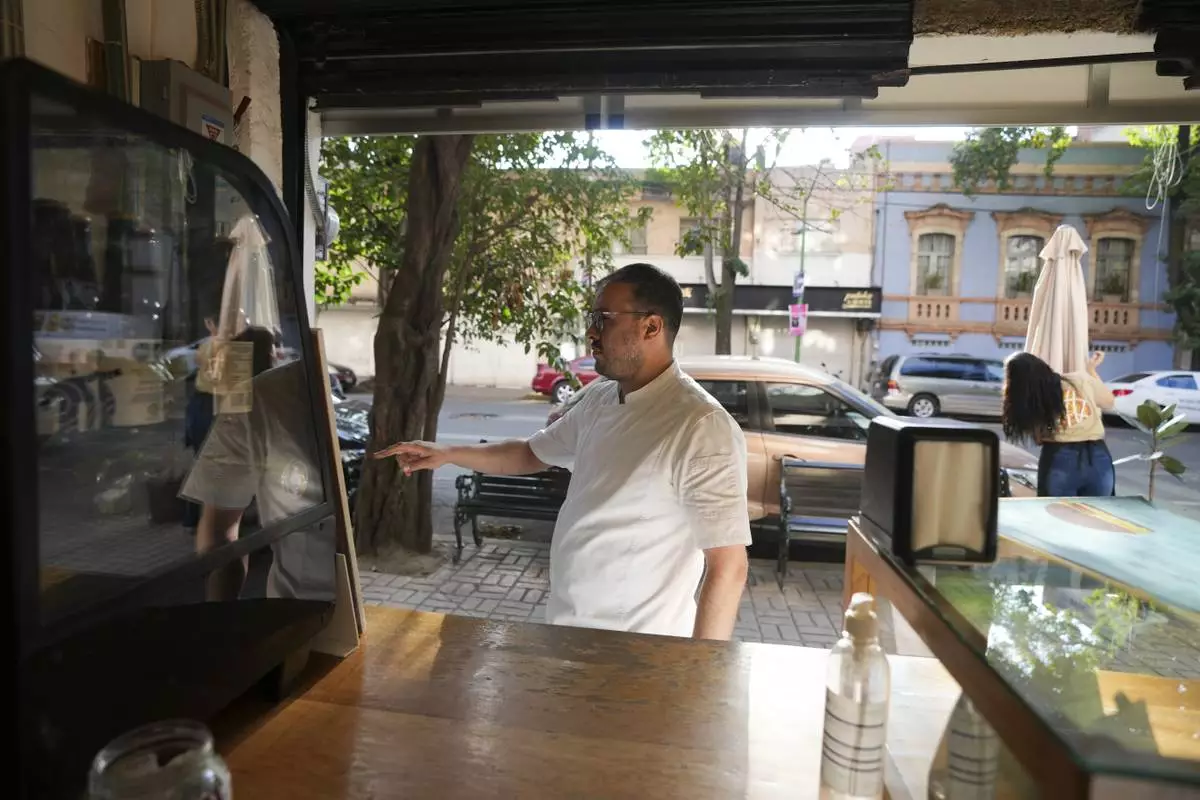
Manu Tovar opens the doors of his bakery to sell pan de muerto, or "bread of the dead," traditional for Mexico's Day of the Dead, in the San Rafael neighborhood of Mexico City, Thursday, Oct. 17, 2024. (AP Photo/Fernando Llano)
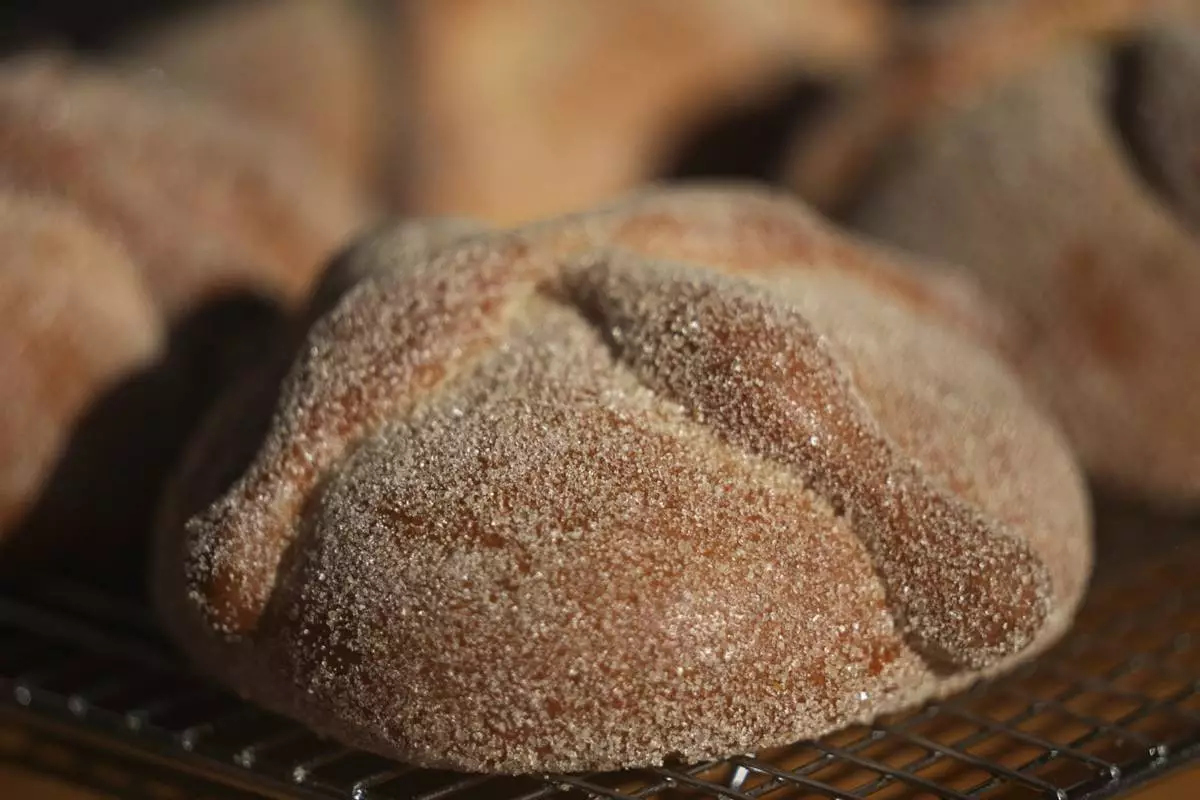
Pan de muerto, or "bread of the dead," traditional for Mexico's Day of the Dead, sits for sale at a bakery in San Rafael neighborhood of Mexico City, Thursday, Oct. 17, 2024. (AP Photo/Fernando Llano)
PARIS (AP) — The trial of eight people in Paris on terrorism charges started on Monday over the beheading of teacher Samuel Paty, who was killed by an Islamic extremist after showing caricatures of Islam's prophet to his middle school students for a lesson on freedom of expression.
Paty's shocking death left an imprint on France, and several schools are now named after him. Paty was killed outside his school near Paris on Oct. 16, 2020, by an 18-year-old Russian of Chechen origin, who was shot to death by police.
Those on trial include friends of assailant Abdoullakh Anzorov who allegedly helped purchase weapons for the attack, as well as people who are accused of spreading false information online about the teacher and his class.
The proceedings started Monday in the presence of members of Paty’s family, including his two sisters.
The trial was held under high security, with many police officers patrolling and making checks outside and inside the courtroom.
Five of the accused, who are currently imprisoned, were seated in a wide glass box. Three others, placed under judicial supervision, sat on the defendants' benches outside the box.
The attack occurred against a backdrop of protests in many Muslim countries and calls online for violence targeting France and the satirical French newspaper Charlie Hebdo. The newspaper had republished its caricatures of the Prophet Muhammad a few weeks before Paty's death to mark the opening of the trial over deadly 2015 attacks on its newsroom by Islamic extremists.
The cartoon images deeply offended many Muslims, who saw them as sacrilegious. But the fallout from Paty’s killing reinforced the French state’s commitment to freedom of expression and its firm attachment to secularism in public life.
“We expect that the justice system will be up to the crime that has been committed," Francis Szpiner, the lawyer representing Paty's 9-year-old son, told reporters. “It’s an unheard-of event in the history of the republic. It’s the first time a teacher has been assassinated because he is a teacher."
Thibault de Montbrial, a lawyer for Paty’s sister, Mickaëlle Paty, said the trial "will enable everybody in French society to become aware of the direct link, extremely clear, that exists between fundamentalist Islam ... and the violence that can lead to such a terrifying act."
Much attention at the trial will focus on Brahim Chnina, the Muslim father of a teenager who was 13 at the time and claimed that she had been excluded from Paty’s class when he showed the caricatures on Oct. 5, 2020.
Chnina, 52, sent a series of messages to his contacts denouncing Paty, saying that “this sick man” needed to be fired, along with the address of the school in the Paris suburb of Conflans Saint-Honorine.
In reality, Chnina’s daughter had lied to him and had never attended the lesson in question.
Paty was giving a lesson mandated by the National Education Ministry on freedom of expression. He discussed the caricatures in this context, saying students who did not wish to see them could temporarily leave the classroom.
An online campaign against Paty snowballed, and 11 days after the lesson, Anzorov attacked the teacher with a knife as he walked home, and displayed the teacher’s head on social media. Police later shot Anzorov as he advanced towards them armed.
Chnina will be tried for alleged association with a terrorist enterprise for targeting the 47-year-old teacher through false information.
His daughter was tried last year in a juvenile court and given an 18-month suspended sentence. Four other students at Paty's school were found guilty of involvement and given suspended sentences; a fifth, who pointed out Paty to Anzorov in exchange for money, was given a 6-month term with an electronic bracelet.
Abdelhakim Sefrioui, 65, is another key figure in the trial opening Monday for the adult suspects. He presented himself as a spokesperson for Imams of France, although he had been dismissed from that role. He filmed a video in front of the school with the father of the student. He referred to the teacher as a “thug” multiple times and sought to pressure the school administration via social media.
Sefrioui founded the pro-Hamas Cheikh Yassine Collective in 2004, which was dissolved a few days after Paty's killing. Sefrioui had long criticized and threatened Muslims who advocate friendship with Jews, including the rector of the Grand Mosque of Paris.
Sefrioui and Chnina face 30 years in prison if convicted.
Chnina denied any incitement to “kill” in his messages and video, claiming he did not intend to incite hatred and violence, according to judicial documents.
Sefrioui’s lawyer, Ouadie Elhamamouchi, said he will seek to prove his client is “innocent" and that the video filmed by Sefrioui in front of the school was not seen by the attacker. "In this case, he is the only one who never had any link with the terrorist,” Elhamamouchi said.
Anzorov, who had wanted to go to Syria to fight with Islamic extremists there, discovered Paty’s name on jihadist social media channels, according to investigators. Anzorov lived 100 kilometers (60 miles) from Paty's school and did not know the teacher.
Two of Anzorov’s friends face life imprisonment if convicted on charges of complicity in murder in connection with a terrorist enterprise. Naim Boudaoud, 22, and Azim Epsirkhanov, 23, are accused of helping Anzorov buy a knife and a pellet gun. Boudaoud also drove Anzorov to Paty’s school. They turned themselves in at the police station, and deny being aware of the attacker’s intentions.
The other four individuals are charged with criminal terrorist conspiracy for communicating with the killer on pro-jihad Snapchat groups. They all deny being aware of the intent to kill Samuel Paty.
On Oct. 13, 2023, another teacher in France was killed by a radical Islamist from Russia, originally from Ingushetia, a region bordering Chechnya.
—-
AP Journalists Marine Lesprit, Nicolas Garriga and Alexander Turnbull contributed to the story.
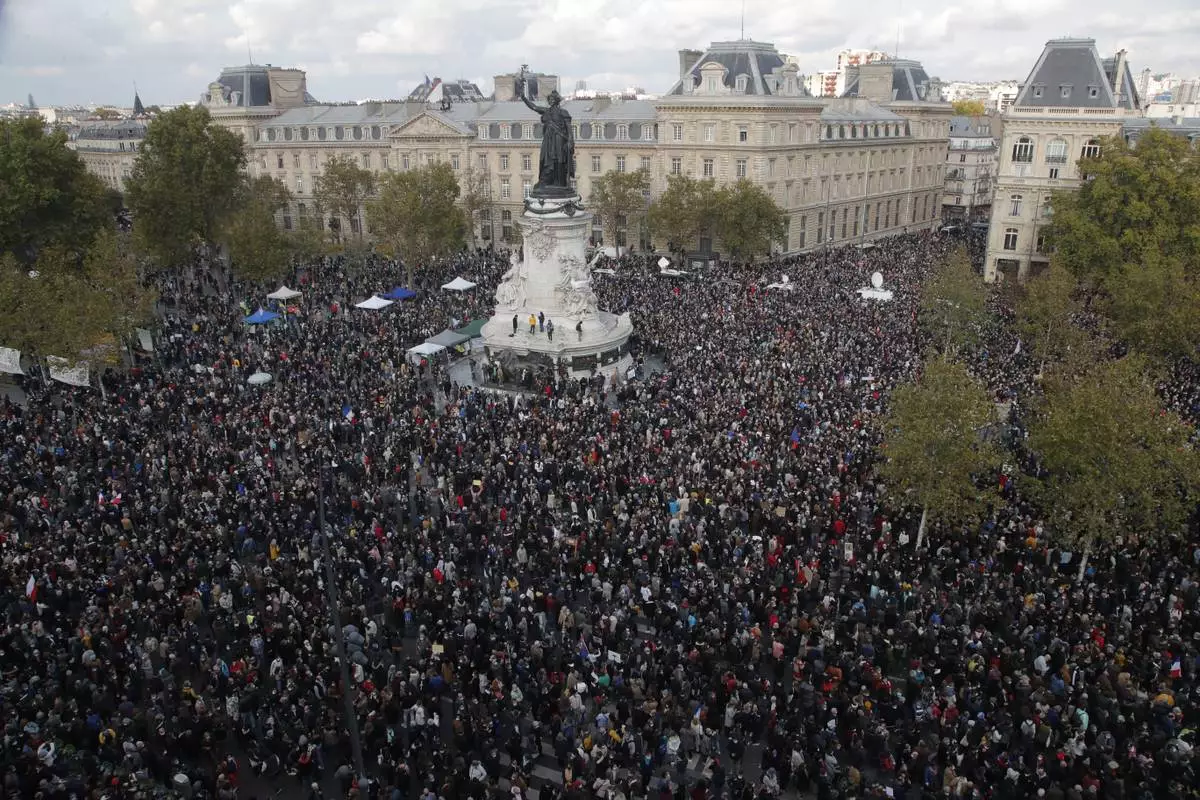
FILE - Hundreds of people gather on Republique square during a demonstration Sunday Oct. 18, 2020 in Paris, in support of freedom of speech and to pay tribute to French history teacher Samuel Paty. (AP Photo/Michel Euler, File)
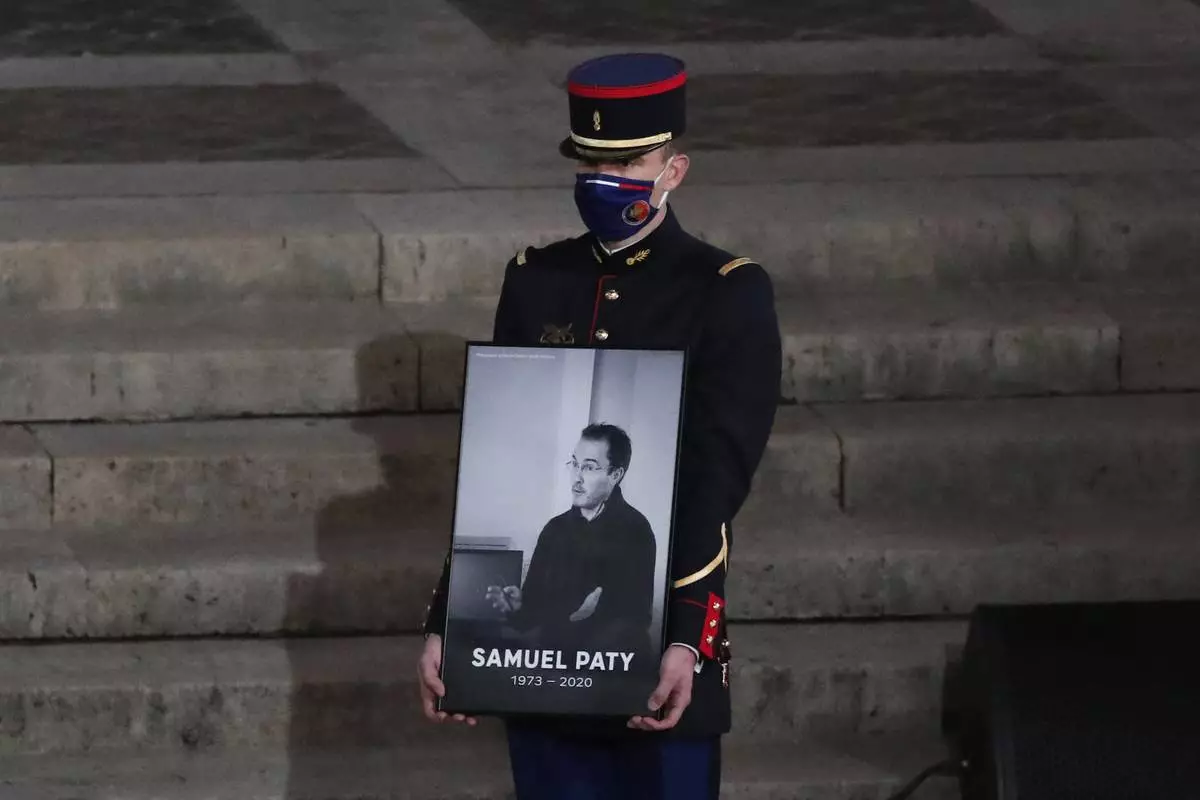
FILE - A Republican Guard holds a portrait of Samuel Paty in the courtyard of the Sorbonne university during a national memorial event, Wednesday, Oct. 21, 2020 in Paris. (AP Photo/Francois Mori, Pool, File)

FILE - French President Emmanuel Macron leaves after paying his respects by the coffin of slain teacher Samuel Paty in the courtyard of the Sorbonne university during a national memorial event, Wednesday, Oct. 21, 2020 in Paris. (AP Photo/Francois Mori, Pool, File)









